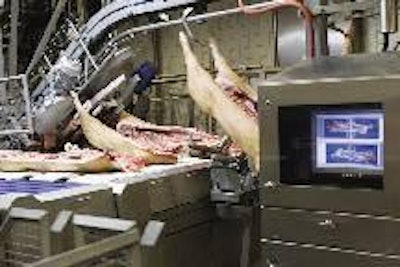
Environmental impacts from the pork chain are being examined again in Europe, with evidence that a major difference has been achieved regarding energy usage during processing operations and from actions on the farm.
A booklet called Danish pig producers and the environment, newly published by the Danish Meat Association/Danske Slagterier, refers to meat industry initiatives with a specific focus on energy consumption by processors. The Danish meat industry pioneered improvements in energy efficiency during the 1990s, it says. In recent decades, the quantity of energy consumed by pigmeat processing in Denmark has been cut by more than 33%.
This has meant a significant lowering of greenhouse-gas emissions. Overall, the emission of greenhouse gases per kilogram of pigmeat has dropped in Denmark by 17% since 1992.
During the same period, the industry has also managed to reduce its water consumption by almost 66%.
The document gives the particular example of energy and water consumption figures for the processing operation of Danish Crown, which it points out is responsible for handling 90% of all pigs slaughtered in Denmark. On the so-called Green Account data prepared every year by Denmark's co-operatives, an electricity usage averaging 12 kWh per pig was recorded for Danish Crown plants in checking year 1987-88. Ten years later, this was down to about 9 kWh and it has been held down at this level in subsequent years — as the chart in Figure 1 indicates.
Danish Crown's energy use for heating at its factories is covered by Figure 2. This illustrates a downward trend from about 20 kWh/pig in 1987-88 to 15 kWh/pig in 1996-97, with later measurements even going towards just 10 kWh/pig.
Slaughterhouses dealing with pigs in Denmark are now calculated to have contributed no more than 170 grams of carbon dioxide equivalent per kilogram of meat, or about as much as the amount due to the energy used in pig housing on farms.

















